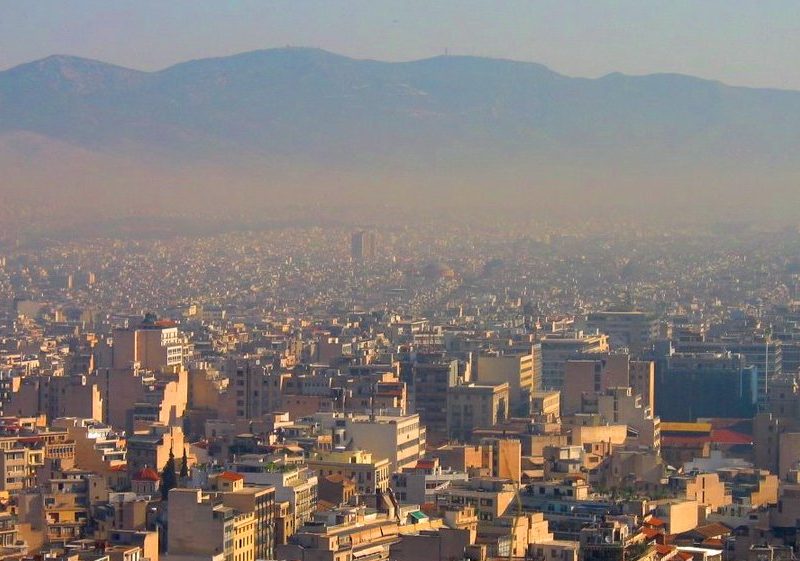
Uploaded on 2016-12-17 by Napoleon Papadakis
MODULE 4 - COMPULSORY EXERCISE: HEAT ISLAND EFFECT Note - Images uploaded are found in Google Images 2. Which are the main UHI effects that you can identify in your area? The UHI effect in the City of Athens has been systematically studied since 1996 by the University of Athens, Department of Physics. The University monitors the intensity of the phenomenon as well as its evolution over time and space.Below here we have some interesting data that has been measured. INTENSITY the difference in temperatures between downtown and open-air rural surroundings can reach up to 14 degrees Celsius or up to 12 degrees compared with the temperatures in Northern and Southern outskirts (Stadtraender). Furthermore, the total number of hot days (>30oC) for the months July and August in the period 1990-2004 have increased up to 40% compared with the years 1977-1989. SPATIAL DISTRIBUTION The highest temperatures are initially measured in the downtown of Athens. Later on the high temperatures move towards the western neighborhoods of the city. TIME DISTRIBUTION 10.00 a.m. – the temperature starts to rise 14.00 p.m. – peak temperatures are measured Comparison of Pictures – Reasons that contribute to the UHI effect in the city Image 1_Athens Center Dense built environment, concrete, continuous building blocks, high buildings Image 2_Athens – Northern Suburb (Thrakomakedones) Greenery, vegetation, low-height buildings, open space available Reasons contributing to UHI effect 1/ Captured heat through continual reflections of solar radiation 2/ Low evaporation & transpiration of the urban environment 3/ Reduced ventilation within the urban configuration 4/ Lack of open spaces or water “islands” 5/ Heat produced by anthropogenic activities (cars, cooling demands of buildings etc.) 6/ Geometric characteristics of streets and buildings (e.g. street canyon effect) 7/ Construction materials used to clad the vertical and horizontal building surfaces 3. Which are the measures you would propose? 1/ Usage of high reflectance materials in the building envelopes, pavements and public spaces (cold materials) 2/ White Roofs / Green Roofs / Cold Roofs 3/ Shading elements throughout the city (plants, trees, green zones, membranes, pergolas etc.) 4/ thermal cladding and insulation upgrade of old buildings 5/ provide incentives and allowances for green facelift (retrofit) in old buildings 6/ Installation of water sprinklers (micronisers) network in paved parks 7/ Transformation of public parks (partially) in urban farming spots. Note - All the above require an holistic approach and study from specialists before putting them in practice. 4. Is UHI effect concerning policy making in your area? There is a lot of concern regarding the climate change and as a result new green policies have been taken into place during the last years in Greece. The eco-friendly approach is reflected in a broad range of funding programmes in accordance with the EU regulations and directives. As a huge number of buildings in Greece were built before the 1980 they are depreciated in terms of thermal properties, heating and cooling demands and characterized as “energy gulpers”. An iconic funding program has been runned by the Ministry of Environment, Energy and Climate Change granting all property owners of old buildings to upgrade the existing buildings supporting actions such as: double glazing windows, installation of shading systems at the facades or openings, installation of new efficient heating systems, green or cold roofs. The program offered up to 70% subvention for the beneficiaries and a huge number of participants took advantage of the grants. As a result, an extended amount of obsolescent buildings became more energy-efficient and up-to date in terms of thermal behavior. Additionally, there is whole series of other environmental funding programs (LIFE+, URBACT 3, etc.) that currently run for the new period of 2014-2020 of grants throughout EU. Renewable energy, low CO emissions of public buildings, creation of environmental and climate governance and participation of local communities in cooperation with educational institutions or NGOs and other organisations.